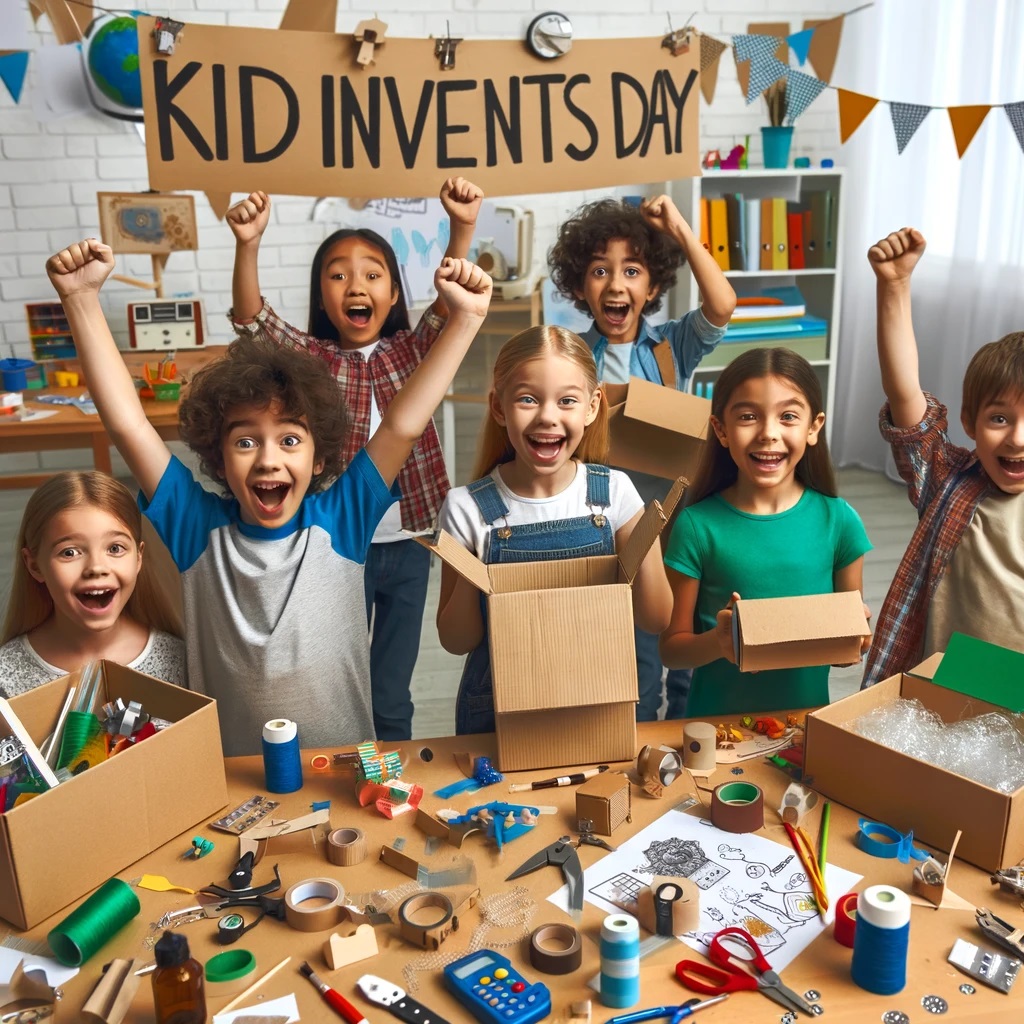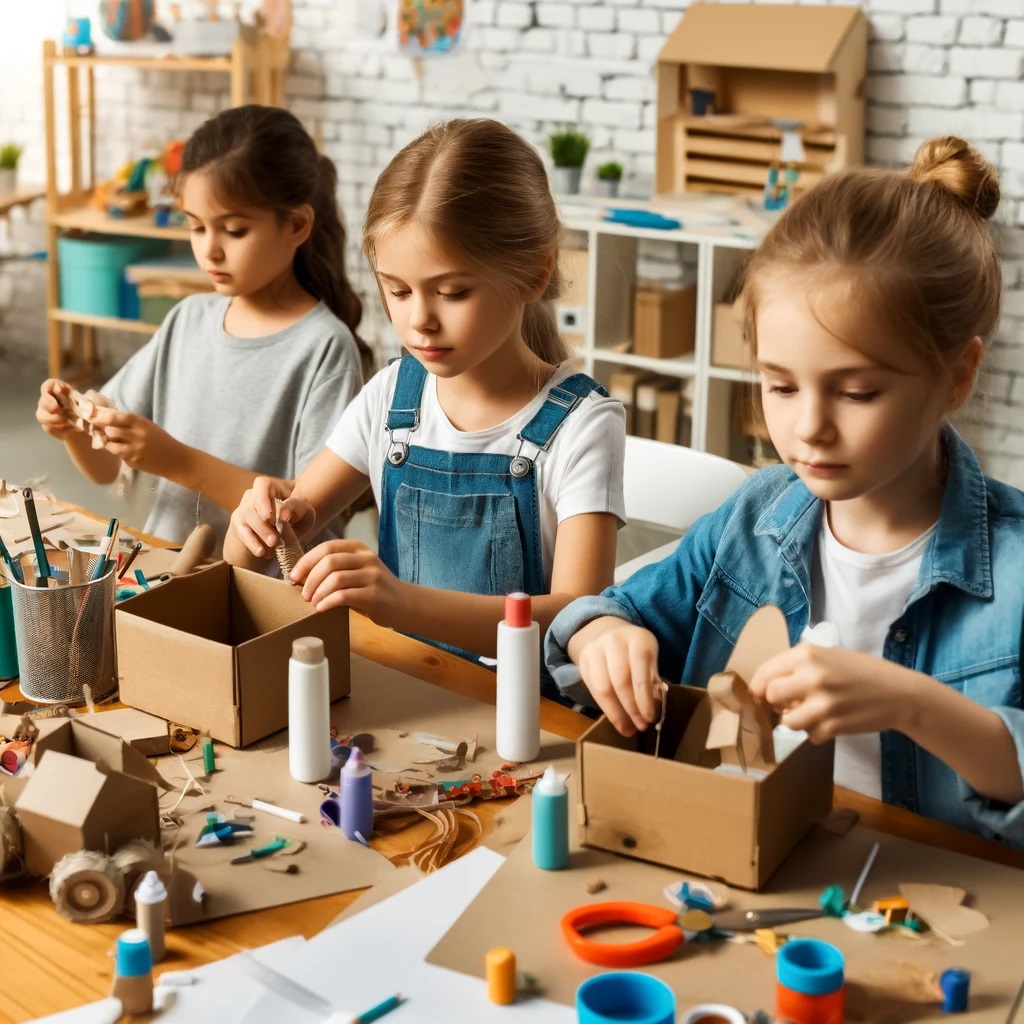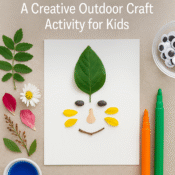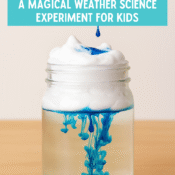
Kid Inventors Day Activities Inspiring Kids for Inventions
We are thrilled to celebrate Kid Inventors Day! This special day recognizes the achievements of young learners who use their imaginations to solve problems. Engaging in activities and experiences that encourage creativity can have lasting benefits on learning, development, and independence.
As educators, parents, and caretakers, it is our responsibility to nurture and support young inventors. That’s why we’ve prepared a series of easy and fun activities for kids to explore the world of invention. By using simple items from around your home or classroom, these hands-on activities will stimulate creative thinking in various ways.
These activities are designed to spark curiosity in kids about invention and engineering. From designing mini cities out of cardboard boxes to constructing giant cardboard robots, your little inventors are sure to be enthralled. Let’s dive right in and get creative!
Introduction to Kid Inventors Day
Kid Inventors Day, celebrated every January 17th, is dedicated to fostering creativity and innovation in the next generation. This annual event is a fantastic way to learn about science, mathematics, and history in a fun and engaging manner.
This special day was chosen to honor Benjamin Franklin’s birthday. As one of the founding fathers of America, Franklin was a prolific inventor and scientist who revolutionized many fields, from politics to electricity, through his innovative thinking. Celebrating Kid Inventors Day is the perfect way to pay homage to him and other inspiring inventors worldwide.
This year, join us in celebrating Kid Inventors Day with your preschooler or toddler! Whether at home or in the classroom, there are plenty of inspiring activities that will spark your child’s curiosity and creativity. Put on your thinking caps, and let’s explore some fun activities that will help kids get excited about inventions!
Benefits of Problem Solving
Children are naturally curious and inventive. By encouraging problem-solving activities within your home and classroom, you can harness this curiosity to develop critical skills.

Cognitive Development
Problem-solving teaches vital skills such as creative thinking and planning. It allows children to approach challenges methodically, developing logical reasoning and analytical skills. This cognitive engagement is crucial for brain development, as it enhances neural connections and promotes intellectual growth. According to a study published in the journal “Child Development,” children who engage in problem-solving activities show improved executive functions, which are essential for academic success and daily life.
Emotional Stability
Engaging in problem-solving activities helps children develop emotional stability. They learn to remain calm under pressure, think logically, and evaluate situations from multiple angles. This emotional resilience is essential for handling stress and adapting to new challenges. Research from the American Psychological Association indicates that children who develop strong problem-solving skills are better equipped to manage anxiety and cope with adversity.
Environmental Awareness
Through problem-solving, children gain heightened focus and comprehension of their surroundings. They learn to identify cause-and-effect relationships, which helps them make better decisions. For instance, when designing a water filtration system from household items, they understand the principles of clean water and its environmental impact. Such activities also foster a sense of responsibility towards environmental conservation and sustainability. Sometimes encouraging them to clean environment or create crafts ignites the creative mind through environment.
Collaboration and Teamwork
Problem-solving often involves working in groups, which fosters collaboration and teamwork. Children learn to communicate their ideas, listen to others, and work towards a common goal. These social skills are invaluable for future academic and professional success. A study by the Collaborative for Academic, Social, and Emotional Learning (CASEL) found that collaborative problem-solving improves social skills and enhances group dynamics, leading to better outcomes in educational settings.
By creating an atmosphere ripe for learning through exploration and problem-solving activities, you’ll guide even the youngest toddlers on the journey toward becoming great innovators!
Fun Games to Encourage Innovation
Playing games is an excellent way to support a child’s growth and development. Here are some games to get your little ones excited about inventing and innovating during Kid Inventors Day.
Board Games
Board games teach kids organizational skills like turn-taking, strategizing, and problem-solving. For example, simple card games can help toddlers sort out cards in different ways. Board games like checkers or Connect Four encourage them to work within a game system, developing strategic thinking. According to a study in the “Journal of Educational Psychology,” playing board games enhances cognitive functions such as memory, attention, and spatial reasoning.
Imagination Games
No inventor should be without an imagination! Games like charades, acting out stories together, and dress-up are great ways to spark creative thinking in younger children. These activities encourage them to visualize concepts and think outside the box. The Imagination Institute has found that imaginative play helps children develop cognitive flexibility, which is crucial for creative problem-solving.
Craft Challenges
Craft activities challenge toddlers to make something from random supplies or everyday objects. These activities help them learn to identify problems, come up with ideas for solutions, and test their creations. For example, you can provide materials like paper, cardboard, and tape, and ask them to create a vehicle that can move using a fan. This hands-on approach fosters ingenuity and practical problem-solving skills.

STEM Kits
STEM (Science, Technology, Engineering, and Mathematics) kits are fantastic tools for encouraging innovation. Kits like LEGO robotics or simple circuitry sets allow kids to build functional models, fostering an understanding of engineering principles. These kits often come with challenges that require problem-solving and creative thinking. The National Science Foundation highlights that early exposure to STEM activities can inspire long-term interest in these fields and improve critical thinking skills.
These activities are sure to get your little inventors off on the right foot!
Kid Inventors Day Activities for Toddlers
Kid Inventors Day is an excellent opportunity to inspire creativity and innovation in children of all ages, including toddlers. While toddlers may be younger and less experienced, they are full of curiosity and have an innate ability to explore the world around them. Engaging them in invention-related activities can help nurture their creativity, problem-solving skills, and love for learning. Here are some tailored activities for toddlers to celebrate Kid Inventors Day and spark their inventive spirits.
1. Sensory Exploration Stations
Set up sensory exploration stations with various materials and textures for toddlers to touch, feel, and manipulate. Items like playdough, kinetic sand, water beads, and textured fabrics can stimulate their senses and encourage imaginative play. Sensory play is a foundational activity that helps toddlers understand different properties of materials and lays the groundwork for future inventiveness.
2. Simple Building Projects
Introduce toddlers to basic building projects using large, safe blocks or interlocking bricks. Encourage them to build towers, bridges, and simple structures. These activities help develop their fine motor skills, spatial awareness, and problem-solving abilities. Provide prompts like “Can you build a house for your toy animal?” to give their creations a purpose.
3. Art and Craft Inventions
Art and craft activities are perfect for toddlers to express their creativity. Provide materials such as paper, crayons, markers, glue, and recyclable items like cardboard tubes and bottle caps. Encourage them to create their own “inventions” by combining these materials. For example, they can make a simple robot or a pretend vehicle. These activities foster imaginative thinking and introduce the concept of creating something new from everyday items.
4. Musical Instrument Creation
Music is a wonderful way to engage toddlers in inventive play. Help them create simple musical instruments using household items. For instance, they can make shakers from filled plastic bottles, drum sets from pots and pans, or guitars from rubber bands and empty tissue boxes. Once the instruments are made, encourage a mini concert where they can explore different sounds and rhythms. This not only stimulates their creativity but also enhances their auditory skills.
5. Storytelling and Puppet Shows
Storytelling and puppet shows are fantastic ways to engage toddlers’ imaginations. Use simple puppets made from socks, paper bags, or felt. Encourage toddlers to create their own stories and perform them using the puppets. This activity promotes language development, narrative skills, and creative thinking. Additionally, it helps them understand the sequence of events and the concept of cause and effect.

6. Nature Walks and Discovery
Take toddlers on nature walks to explore the outdoors. Provide them with magnifying glasses, small containers, and notebooks to collect and observe natural items like leaves, rocks, and flowers. Back at home or in the classroom, encourage them to create simple “inventions” inspired by their discoveries, such as leaf rubbings, rock paintings, or nature collages. This activity nurtures their curiosity about the natural world and fosters a love for exploration.
7. Interactive Storybooks and Apps
Utilize interactive storybooks and educational apps designed for toddlers. Many of these digital tools encourage problem-solving and creative thinking through interactive games and activities. Ensure the content is age-appropriate and promotes active engagement rather than passive consumption.
8. Role-Playing and Dress-Up
Role-playing and dress-up activities allow toddlers to step into the shoes of inventors, scientists, and explorers. Provide costumes, props, and simple tools like magnifying glasses and notebooks. Encourage them to invent their own characters and scenarios, fostering imaginative play and narrative skills.
By incorporating these activities into your Kid Inventors Day celebrations, you can create a rich and engaging environment that nurtures the inventive spirits of toddlers. These experiences not only stimulate their creativity and problem-solving abilities but also lay the foundation for a lifelong love of learning and innovation. Celebrate the potential of your little inventors and watch them explore the world with wonder and excitement!
Brainstorming Ideas for Fun Inventions
Creative thinking is the perfect way to celebrate Kid Inventors Day. Brainstorming activities can help kids understand how inventors come up with ideas that make a positive impact on the world.
Brainstorming Sessions
Start by writing down ideas on a dry-erase board, chalkboard, or even post-it notes. This helps children organize their thoughts and visualize their ideas. The concept of “brainstorming” was invented by Alex Osborn in the 1930s and has been proven effective for generations. Research from the Journal of Creative Behavior shows that group brainstorming can significantly increase the quality and quantity of creative ideas.
Encouraging Wild Ideas
Encourage your kids to let their imaginations run wild. Maybe they can come up with a way to make their toys easier to clean or a way to store their books conveniently. Ask questions like ‘How would this make life easier?’ or ‘How could this be used by other people?’ These questions help reframe the challenge and motivate new perspectives. Studies indicate that encouraging divergent thinking, where children explore multiple possible solutions, enhances creativity and innovation.
Problem-Solving Workshops
Host problem-solving workshops where kids identify common issues and brainstorm innovative solutions. For instance, they can tackle environmental problems like reducing plastic waste or improving recycling methods. Providing real-world context helps them understand the importance of their inventions. The World Economic Forum emphasizes that problem-based learning, where students work on real-world problems, develops critical thinking and collaborative skills.
Invention Journals
Give each child an invention journal where they can jot down their ideas, sketches, and observations. This practice encourages them to think continuously about innovation and keeps their creative juices flowing. Reviewing their journals periodically can help refine and develop their ideas. Keeping an invention journal has been shown to improve creative thinking and persistence in solving problems.
With these awesome activities, you’ll have them motivated and ready for more challenges!
Crafting a Prototype Together
Once your kids have come up with an invention and detailed design plans, it’s time to bring the class together and do some prototyping! Crafting a prototype with the help of teachers, parents, and staff can be an incredibly educational and inspiring experience.

Paper Prototyping
Have the kids draw a still from their game on paper, then sequence them together to form a story. This is perfect for kids interested in video game design. Paper prototyping helps them understand the basics of storytelling and game mechanics. The iterative process of paper prototyping allows for quick feedback and improvements, enhancing the learning experience.
Hands-on Crafts
Challenge the kids to create working prototypes with everyday objects. This could include crafting board games, inventing new tools from classroom toys, or building vehicles from blocks and Legos. Hands-on crafting develops their fine motor skills and practical problem-solving abilities. According to the International Journal of STEM Education, hands-on activities are crucial for developing spatial skills and engineering concepts.
Online Design Tools
Introduce your students to online design programs like Tinkercad or SketchUp. These tools allow them to sketch out and 3D print their inventions. Learning to use design software prepares them for future technological advancements and careers in engineering or design. Familiarity with digital design tools is increasingly important in today’s tech-driven world and can enhance their ability to visualize and implement complex ideas.
Storytelling and Documentation
Encourage your toddler class to record or write stories highlighting their innovation process and experiences during Kid Inventors Day activities. Documenting their journey helps them reflect on their learning and appreciate their accomplishments. Reflective practices like journaling and storytelling can enhance metacognitive skills and help children understand their own thinking processes.
Prototype Testing and Feedback
Once the prototypes are ready, have a testing session where kids can try out each other’s inventions. Provide constructive feedback and discuss what worked well and what could be improved. This iterative process is a key component of the engineering design cycle and helps them learn from their mistakes. According to engineering education research, iterative testing and feedback are essential for developing robust problem-solving skills and resilience.
Celebrate With a Special Invention Show
Kid Inventors Day is the perfect time to encourage kids to think outside the box and let their imaginations run wild. To celebrate, host your own special invention show. This event can be a fun and educational experience for both teachers and kids.
Activities Inspired By Inventions
Start by having the kids make their own pipe cleaner robots or paper planes. They could also design mini-windmills after researching how actual windmills work. These activities bring inventions to life for kids and encourage problem-solving and creative thinking. The hands-on experience of building models helps solidify their understanding of scientific and engineering principles.
Kid Inventors YouTube Channel
Another great way to get your kid inventors motivated is by checking out the ‘Kids Invent Stuff’ YouTube channel. This program gives 4-11-year-olds the chance to have their invention ideas built, with some adult supervision. It provides a platform for older children to use their creativity and develop a deeper understanding of how things are put together. Watching their peers’ inventions come to life can be highly motivating and inspiring.
Inventions Challenge For Kids
Introduce them to the ‘Invention Challenge For Kids’—a perfect way for kids to learn about the trial and error process. This challenge involves working in groups or individually on inventing something new, fostering problem-solving skills in a fun environment. Challenges that involve constraints, like limited materials or specific themes, can enhance creativity by forcing kids to think more innovatively.
Showcasing Their Work
Set up a mini-exhibition where kids can showcase their inventions. Invite parents, teachers, and peers to view the displays and ask questions. This not only boosts the children’s confidence but also gives them a sense of accomplishment and recognition for their hard work. Publicly showcasing their work helps children develop presentation skills and learn how to articulate their ideas clearly.
Award Ceremonies
Hold an award ceremony to recognize the efforts and creativity of all participants. Awards can be given for categories such as Most Innovative, Best Design, and Most Practical. Celebrating their achievements encourages continued interest in innovation and invention. Recognition and rewards can boost self-esteem and motivate kids to pursue further creative projects.
Encouraging Young Innovators To Embracing the Future
By incorporating these Kid Inventors Day activities and resources into your curriculum, you can show your students that inventing is fun and that their ideas matter. You can help them understand that inventing is a unique way to make the world better and find creative solutions to its problems. With the right encouragement and guidance, your students can turn their ideas into inventions that can shape the future.
Inspiring kids to invent is one of the most rewarding things we can do as teachers and parents. After all, today’s kid inventors will become tomorrow’s innovators, who will bring us into the future. Let us embrace their amazing ideas and help them to follow their dreams!
Additional Resources for Encouraging Young Inventors
To further support young inventors, consider exploring the following resources and strategies:
Invention Kits and Tools
Provide children with invention kits that include basic electronics, motors, sensors, and other components. Kits like littleBits, Makey Makey, and Snap Circuits are excellent for introducing kids to electronics and programming.
Maker Spaces
Create a maker space in your home or school where children can access tools, materials, and inspiration. A well-equipped maker space can become a hub of creativity and innovation, encouraging kids to experiment and build.
Invention Competitions
Encourage participation in local, national, and international invention competitions. Competitions like the Google Science Fair, FIRST Robotics Competition, and the National Invention Convention provide platforms for young inventors to showcase their talents and gain recognition.
Mentorship Programs
Connect young inventors with mentors who can guide them through the invention process. Mentors can provide valuable insights, feedback, and encouragement, helping children refine their ideas and bring them to fruition.
Educational Programs
Enroll children in educational programs that focus on invention and innovation. Programs like STEM summer camps, after-school robotics clubs, and online coding courses can provide structured learning experiences that foster creativity and technical skills.
Encouraging a Growth Mindset
Teach children the importance of a growth mindset—the belief that abilities and intelligence can be developed through dedication and hard work. Emphasize that failure is a part of the learning process and that perseverance leads to success.
Family Invention Nights
Host family invention nights where everyone works together on creative projects. This not only strengthens family bonds but also models collaborative problem-solving and innovation for children.
Books and Media
Expose children to books, movies, and documentaries about famous inventors and their inventions. Stories of inventors like Thomas Edison, Marie Curie, and Steve Jobs can inspire children and show them that anyone can become an inventor with curiosity and determination.
Real-World Applications
Help children see the real-world applications of their inventions. Discuss how their ideas could solve problems in their community or the world. This helps them understand the impact of innovation and motivates them to think big.
Celebrating Successes
Celebrate every milestone, no matter how small. Whether it’s a successful prototype, a creative idea, or a completed project, acknowledging these achievements builds confidence and encourages continued exploration and invention.
By integrating these strategies and resources into your approach, you can create an environment that nurtures and celebrates young inventors. Together, we can inspire the next generation of innovators who will shape the future with their creativity and ingenuity.





[…] is an open-ended art activity that sparks creativity in kids. They can make simple prints or complex patterns and pictures using the toilet paper roll stamps. […]
[…] together as a family is a great way to bond while also encouraging an active lifestyle in your kids. Go for walks or jogs together, play sports, go swimming or biking. Make physical activity a part […]
[…] books have enduring power to inspire imagination in kids of all genders. While comics were once dismissed as frivolous entertainment for boys, they are now […]
[…] paint and imagination, you can create a vibrant work of art. Rock painting is a fun, open-ended activity for all ages that inspires creativity. Unleash your inner artist and get started on your masterpiece […]
[…] moves (and how waste is removed) gives children real-world context for science. These hands-on activities help kids see water management not just as engineering, but as a global […]
[…] further blend movement with learning, why not designate regular “Kids Inventor Days” , where children become young engineers, scientists, and artists? These hands-on activities […]
[…] a child’s wellbeing and development. This ignites creativity of the child brain which will lead them to be inventors in the future with happy mind growing up. Celebrating together strengthens the connection between parents and […]
[…] game, a captivating activity designed to intertwine learning with fun, demonstrating how educational endeavors can be seamlessly integrated into exciting, real-world […]
[…] Inventors’ Day (celebrated internationally on 17 January) is a gentle nudge to honour youthful curiosity and the power of asking “What if?”. The beauty of the occasion is that it demands neither expensive kits nor […]